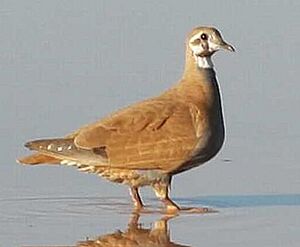Lake Sylvester System facts for kids
The Lake Sylvester System is a group of lakes in the Northern Territory of Australia. It is located about 180 kilometers (110 miles) northeast of Tennant Creek. These lakes are called ephemeral because they don't always have water. They fill up with water after heavy rains and can sometimes stay full for over a year.
What is the Lake Sylvester System?
The Lake Sylvester System includes three main lakes: Lake de Burgh, Lake Sylvester, and Lake Corella. There is also another unnamed area of water to their west. All these lakes are connected by many smaller wetlands. The system also has two billabongs, which are small lakes that usually have fresh water all year round.
When there isn't much rain, the lakes are separate. But when it rains a lot, they can fill up and connect to each other. During very big floods, all the water bodies in the system can join together. This creates one huge lake that can be as big as 2,000 square kilometers (about 770 square miles)!
The land around the lakes has special grey clay soils. These soils often crack when they are dry. The area is covered with open shrublands and savanna woodlands. You can also see scattered coolibah trees, tall grasses, and water plants. This land is part of a large cattle farm called Brunette Downs. It is run by the Australian Agricultural Company.
Birds and Wildlife
A large part of the Lake Sylvester System, about 2,262 square kilometers (873 square miles), is known as an Important Bird Area. This special title is given by BirdLife International. It means the area is very important for birds.
Many different kinds of birds live and breed here. For example, it has important breeding groups of letter-winged kites. It also has more than 1% of the world's population of several bird species. These include plumed whistling-ducks, grey teals, hardheads, little black cormorants, Australian pelicans, straw-necked ibises, Eurasian coots, Oriental plovers, Australian terns, and flock bronzewings. The area is also home to Australian bustards.
When the lakes are completely full of water, they can support a huge number of birds. Sometimes, up to a million waterbirds can be found here!


